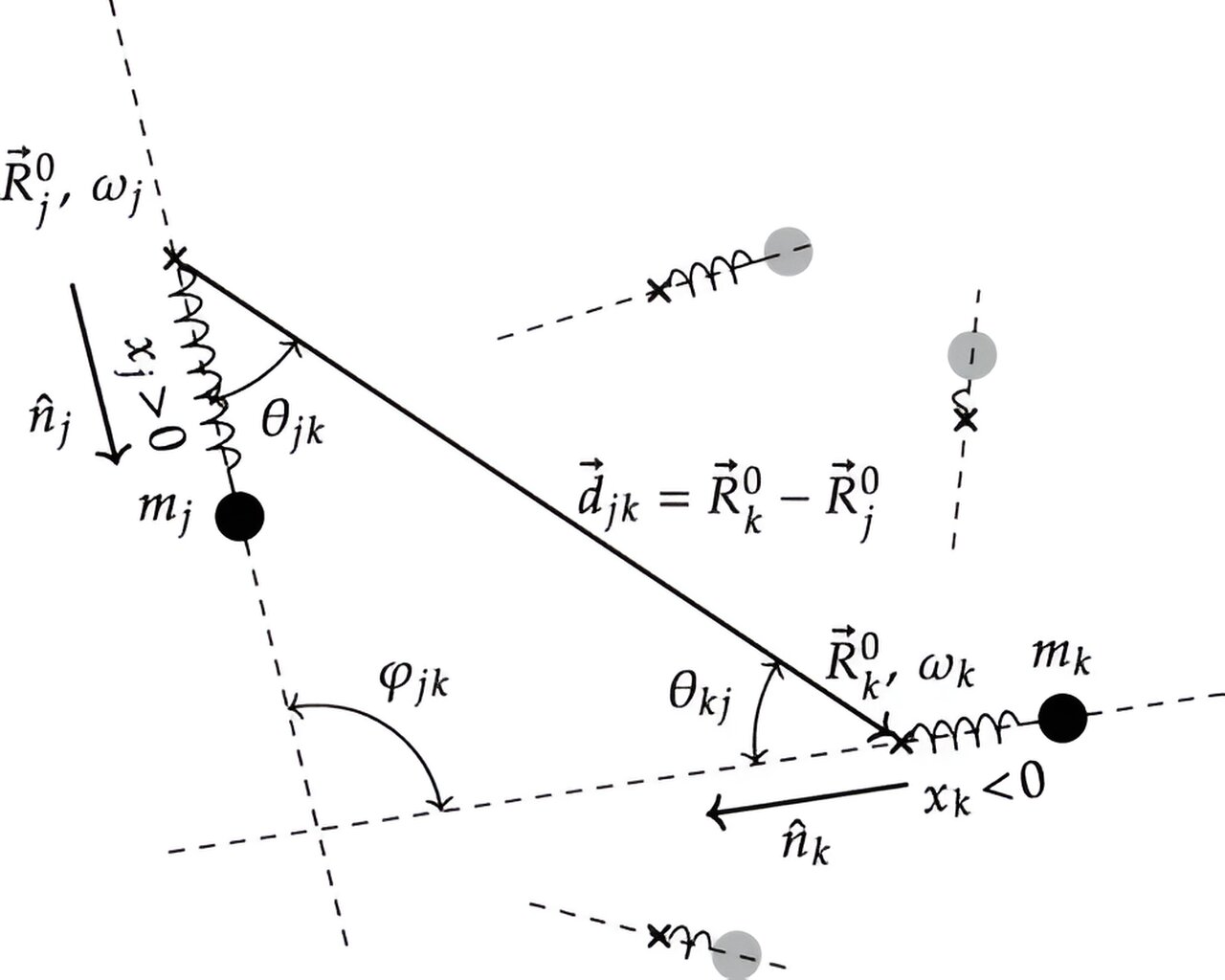× close
Gravity is part of our everyday life. Still, the gravitational force remains mysterious: to this day we do not understand whether its ultimate nature is geometrical, as Einstein envisaged, or governed by the laws of quantum mechanics.
Until now, all experimental proposals to answer this question have relied on creating the quantum phenomenon of entanglement between heavy, macroscopic masses. But the heavier an object is, the more it tends to shed its quantum features and become “classical,” making it incredibly challenging to make a heavy mass behave as a quantum particle
In a study published in Physical Review X this week, researchers from Amsterdam and Ulm propose an experiment that circumvents these issues.
Classical or quantum?
Successfully combining quantum mechanics and gravitational physics is one of the main challenges of modern science. Generally speaking, progress in this area is hindered by the fact that we cannot yet perform experiments in regimes where both quantum and gravitational effects are relevant.
At a more fundamental level, as Nobel Prize laureate Roger Penrose once put it, we do not even know whether a combined theory of gravity and quantum mechanics will require a “quantization of gravity” or a “gravitization of quantum mechanics.”
In other words: Is gravity fundamentally a quantum force, its properties being determined at the smallest possible scales, or is it a “classical” force for which a large-scale geometrical description suffices? Or is it something different yet?
It has always seemed that to answer these questions, a central role would be played by the typically quantum phenomenon of entanglement. Ludovico Lami, mathematical physicist at the University of Amsterdam and QuSoft, says, “The central question, initially posed by Richard Feynman in 1957, is to understand whether the gravitational field of a massive object can enter a so-called quantum superposition, where it would be in several states at the same time.
“Prior to our work, the main idea to decide this question experimentally was to look for gravitationally induced entanglement—a way in which distant but related masses could share quantum information. The existence of such entanglement would falsify the hypothesis that the gravitational field is purely local and classical.”
A different angle
The main problem with the previous proposals is that distant but related massive objects—known as delocalized states—are very challenging to create. The heaviest object for which quantum delocalization has been observed to date is a large molecule, much lighter than the smallest source mass whose gravitational field has been detected, which is just below 100 mg—more than a billion billion times heavier. This has pushed any hope of an experimental realization decades away.
In the new work, Lami and his colleagues from Amsterdam and Ulm—interestingly, the place where Einstein was born—present a possible way out of this deadlock. They propose an experiment that would reveal the quantumness of gravity without generating any entanglement.
Lami explains, “We design and investigate a class of experiments involving a system of massive ‘harmonic oscillators’—for example, torsion pendula, essentially like the one that Cavendish used in his famous 1797 experiment to measure the strength of the gravitational force. We establish mathematically rigorous bounds on certain experimental signals for quantumness that a local classical gravity should not be able to overcome.
“We have carefully analyzed the experimental requirements needed to implement our proposal in an actual experiment, and find that even though some degree of technological progress is still needed, such experiments could really be within reach soon.”
A shadow of entanglement
Surprisingly, to analyze the experiment, the researchers still need the mathematical machinery of entanglement theory in quantum information science. How is that possible? According to Lami, “The reason is that although entanglement is not physically there, it is still there in spirit—in a precise mathematical sense. It is enough that entanglement could have been generated.”
The researchers hope that their paper is only the beginning, and that their proposal will help design experiments that may answer the fundamental question about the quantumness of gravity much earlier than expected.
More information:
Ludovico Lami et al, Testing the Quantumness of Gravity without Entanglement, Physical Review X (2024). DOI: 10.1103/PhysRevX.14.021022

Dr. Thomas Hughes is a UK-based scientist and science communicator who makes complex topics accessible to readers. His articles explore breakthroughs in various scientific disciplines, from space exploration to cutting-edge research.








